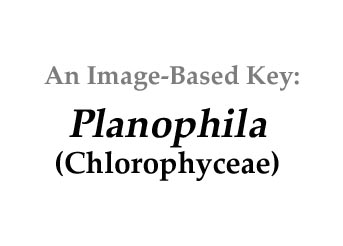|
Home / Greens
/Colonies / Non-flagellated / Planophila |
||||
|
|
||||
|
Click on images for larger format |
||||
Name
derivation:
|
||||
|
|
||||
Classification:
|
||||
Planophila Gerneck 1907;
3 of 7 species descriptions are currentl accepted
taxonomically (Guiry and Guiry
2013).
Order Chaetopeltidales; Family Chaetopeltidaceae Polyphyletic,
based on small-subunit rDNA gene sequences (Friedl and O’Kelly 2002).
|
||||
Morphology:
|
||||
|
Sarcinoid green colony (‘chlorosarcinoid’).
Small pseudoparenchymatous tabular or
circular cell plates when young and consisting of only a few cells, older plants
more like a cluster of loosely connected cells. Vegetative cells nearly
globular, containing a parietal chloroplast. Propagation by fragmentation,
production of akinetes or zoospores. Sporangia
formed from vegetative cells increasing, diameter to about twice. Planophila species moslty
on moist soil, one epiphytic in salt and brackish water (Guiry
and Guiry 2013).
|
||||
Similar genera:
|
||||
|
|
||||
Habitat:
|
||||
|
Terrestrial (soil). |
||||
References:
|
||||
|
Guiry, M.D. and G.M. Guiry 2013. AlgaeBase. World-wide electronic publication, National University of Ireland, Galway. http://www.algaebase.org; searched on 07 May 2013. |
||||

